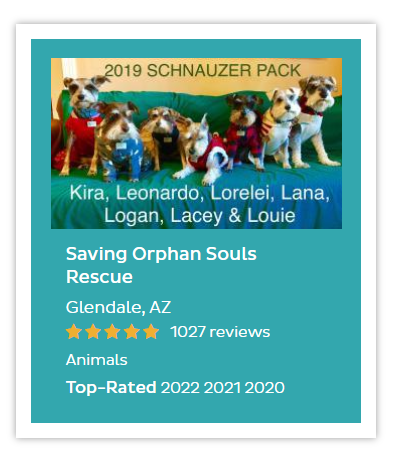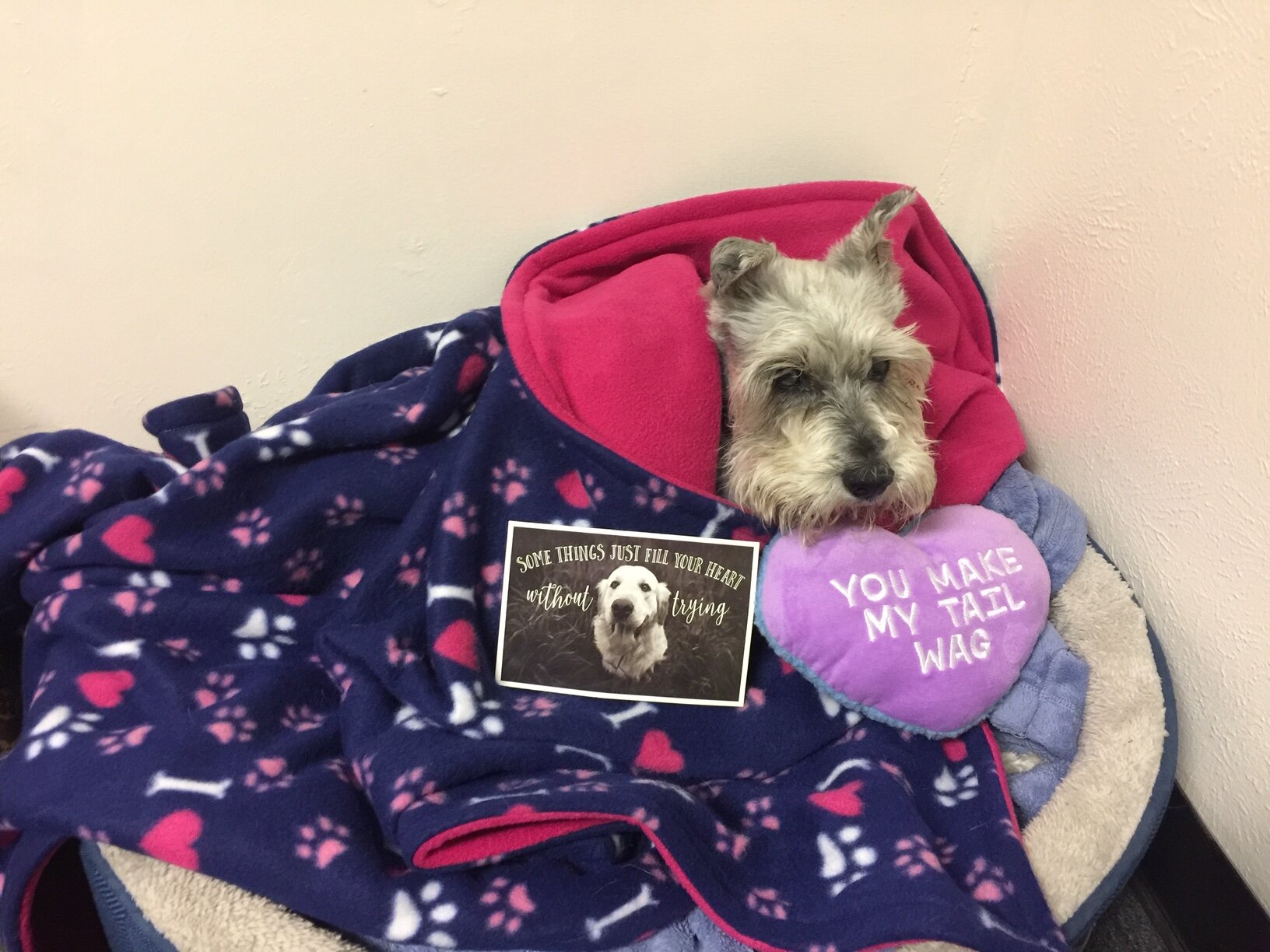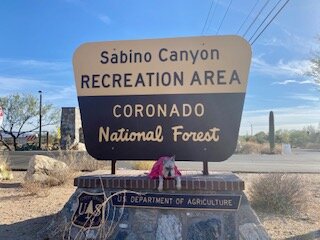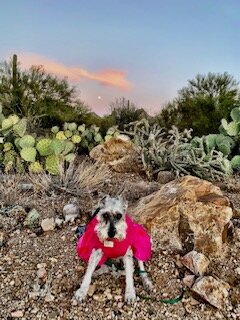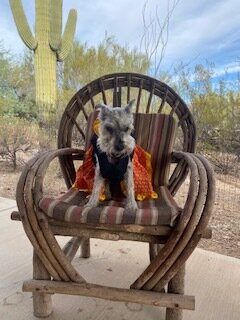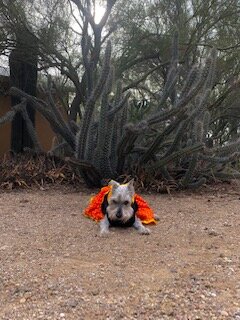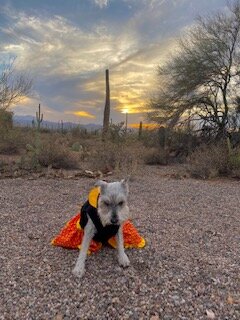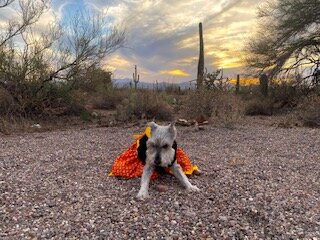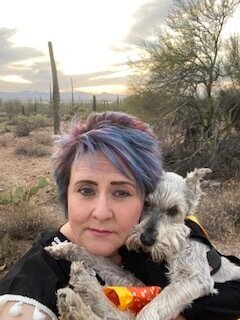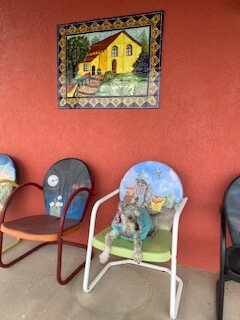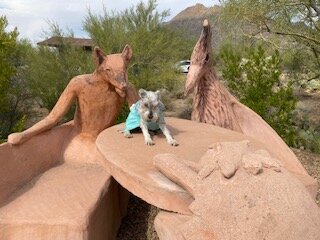***SAVING ORPHAN SOULS IS ON HIATUS AND NOT DOING RESCUE UNTIL
FURTHER NOTICE!
To date, we have adopted over 5,000 animals (Small Dogs and Cats) in the 8 years we have been a rescue. I cannot thank my team of Volunteers and Fosters enough for making this happen, and giving our fur friends forever homes.
Check out our Facebook Page above to see the animals we have taken in, and adopted out over the years.
How Quickly Does it Get Too Hot or Cold for a Dog?
On a mild day of about 70 degrees Fahrenheit, the temperature inside your car can quickly rocket to over 115 degrees, according to a study in the journal Pediatrics; most of this heat rise occurs within just 30 minutes. And dogs can experience HEAT EXHAUSTION when their body temperature hits just 103 degrees.
Cracking a window and parking in the shade makes little difference. The problem is that cars are temperature conductors. Even in the shade and with the windows down, cars conduct and amplify the outdoor temperature — it doesn't need to be very warm outside for the inside of your car to become unbearably hot.
Leaving your dog in a freezing car can be just as dangerous as leaving him in a hot car. When the heater isn't running, cold temperatures can basically turn your car into a refrigerator and could cause your dog hypothermia.
MONSOON SAFETY TIPS FOR PET OWNERS
Arizona’s monsoon season is beginning soon, and it can be a scary time for pet owners and their furry companions. However, it doesn’t have to be! By making sure that you are both informed and prepared, you can help your pets with the added stress that this season can bring. If you’ve never experienced monsoon season in Arizona, it isn’t as terrifying as it may sound. Arizona’s monsoon season begins June 15th and goes through the end of September. Simply stated, monsoon season means an increase in thunderstorms and rainfall over large areas of the Southwestern United States, including Arizona. Unfortunately, due to Arizona’s hard, desert ground, the water falls quicker than it can be absorbed, causing flash flooding, property damage and road closures. While many Arizonians are generally aware of the need to protect their homes and vehicles from possible damage, they may sometimes forget that there are serious dangers that these storms can pose to our beloved pets as well. Fortunately, there are some super, simple ways to make your pets more comfortable during this rainy season.
How to Comfort Your Pet During Storms
Here are five tips to help keep your little ones safe during the season:
Create a safe space.
Plan potty breaks ahead of time.
Comfort your pets.
Keep them distracted.
Bring your pets inside.
1. Create a safe space.
Before the rainy season begins, create a special “safe place” in your home where your pet can easily go to feel safe and secure. This could be their usual kennel or a bed tucked into a corner that makes them feel protected from the thundering sounds that will sometimes fill your home.
2. Plan potty breaks ahead of time.
When you know a storm is approaching, be sure that your pets have an opportunity to go outside and relieve themselves prior to the downpour. Many pets will be too frightened to go out during a monsoon so encouraging them to do so beforehand can help to prevent accidents while they wait out the storms inside.
3. Comfort your pets.
Look into some of the products designed specifically for pets frightened by thunderstorms and rain, such as compression vests or supplements:
Compression vests, such as the Thundershirt, are safe and easy-to-use garments that apply gentle, constant pressure to your pet, much like swaddling an infant. They come in a variety of sizes and work wonders for the majority of pets who become anxious due to outside stimuli.
Supplements, such as CBD products, pheromones, Holistic Hound, or Rescue Remedy, are homeopathic, natural ways to help support calm behavior in pets during any stressful situation. Typically these supplements are very easy to use and will work to calm and relax your pets.
4. Keep them distracted.
Turning on the television or radio can help to drown out the noise of the storms. Also, engaging your dog in a game of tug-of-war, fetch, puzzle feeders, or simply cuddles can help keep them distracted from the chaos happening outside of your home.
5. Bring your pets inside.
Finally, never leave your pets outside during a monsoon. Pets who usually live outdoors can still be frightened or injured by the intense winds, rains, and thunder. More pets are lost during this monsoon season than during any other time in Arizona. A frightened animal may go to extreme measures to escape the loud sounds and building water, sometimes injuring themselves in the process.
That fence that you think they can’t jump? You’d be surprised!
If you have no other option than to leave them outdoors, ensure that no amount of digging, pulling, or climbing will allow them to escape their enclosure. Also, be sure that their enclosure is on high enough ground that it won’t fill with water, causing them discomfort or possibly drowning.
Following these simple steps can help both you and your pets to have a safe and less stressful monsoon season in Arizona. Don’t forget to reward them with an extra treat or some fun play time in the puddles once the storm passes! (Reward yourself, too! You did great!)
AM I FAT MOM & DAD? PET NUTRITION IS KEY!
With the holiday season ending, if your pet has been looking a little “overfed”, it might be time to start making some changes to their diet and increase their activity. Overweight pets have a higher risk of developing diabetes, arthritis, heart disease, high blood pressure and certain forms of cancer, and helping them slim down is easier than you think. Here are some tips to help your best friend maintain their optimal weight:
Weight loss is 80% about diet and 20% about exercise. Measure the amount you feed your pet every day and feed meals rather than leaving food out for free choice grazing.
Watch those treats. Pets love a good snack, but many treats are high in sugar and fat. For canines, instead of treats, give them baby carrots, celery, cucumbers and ice cubes. For cats, opt for a dental chew (in limited amounts).
Exercise more. Dogs of course love to go on walks, so take them out for a jog or a stroll 30 minutes a day for at least three to four days a week. Cats can get their exercise by playing indoor games like chasing a toy or feather for around 20 minutes a day.
Get everyone involved. Whether you live with a partner, roommate or kids, keeping your household aligned with the same goal of helping your pet stay healthy will make things easier, as everyone can participate in the same exercise/play and healthy treat routines.
Consult with your veterinarian. Vets are experts when it comes to pet nutrition and care, and our vets can consult with you on a plan to help your pet shed those extra pounds to become happier and healthier!
It’s not difficult to help your pet stay in shape, however it does take time, commitment and patience. You may not notice results right away but being consistent is key.
OUR FELINES ARE IN NEED OF CANNED CAT FOOD ON A CONSISTENT BASIS.
NOT ONLY DO WE FEED OUR RESCUE ANIMALS, BUT WE ALSO TAKE CARE OF THREE (3) FERAL COLONIES WITH APPROXIMATELY (40) CATS TOTAL. WE ARE DILIGENT ON TNR (TRAP, NEUTER, RELEASE) TO ENSURE THE COLONY SIZE STAYS CONSISTENT.
IF YOU WOULD LIKE TO DONATE CANNED FOOD OR DRY FOOD - PLEASE CONTACT US DIRECTLY AT 347-308-0352 OR SEND THROUGH AMAZON TO OUR HOME BASE LOCATION.
THANK YOU!
New Dog Owner’s Guide
The prospect of adding a new puppy to your family can be incredibly exciting. Most dog owners would agree that having a constant, loyal companion who loves them unconditionally brings a tremendous amount of joy to their lives.
Having a dog is a huge commitment, however, and a decision you’ll really want to think through. Your new pet will be with you for many years to come, so if you are a first-time dog owner, there are several things you’ll want to know before deciding to adopt a new canine friend.
“Informative Articles about Cats and Dogs is located within the Top Page Drop Down Section under Educational Information. Please take a moment to check out these informative articles.”
Pet Safety: A Checklist for the Changing Seasons
It’s the time of year when the scent of pumpkin spice wafts through the air and dogs are wont to roll in piles of crispy leaves. It’s also a great time to protect the safety and well-being of your pet from potential seasonal dangers. Here are ten items that should be on your radar:
What to Do With the Kids Back in School — With fewer playmates around, is your pet napping the day away on the couch? Consider hiring a dog walker to take your pooch on a stroll around the neighborhood during the day. Schedule a game of laser chase with your cat over your lunch hour. Or consider dropping your dog at day care so he or she can romp, socialize and burn off energy while you’re at work.
Walking in the Dark — As the days get shorter, you may find that your usual morning or evening walk takes place in the dark. Consider buying a reflective leash, collar or coat to make sure your pet is visible to nearby cars and cyclists.
Tick Checks — Just because the leaves are falling doesn’t mean the ticks are hibernating. Help keep your pet protected with regular tick prevention and thorough tick checks when they come indoors.
Allergies — People who suffer from hay fever and ragweed allergies can be miserable until the first frost. The same goes for pets who have environmental allergies. If your pet is itching, scratching or chewing on his or her skin, consult your veterinarian for medications that can help bring your pet relief.
Fur Coat Care — Many pets shed more in the fall as their winter coat comes in. Take the time to brush your pet regularly, so there will be less to clog your vacuum cleaner.
Bundle Up — As the mercury drops, dogs and cats who have thin coats or are hairless can start to shiver. To keep them toasty, stock up on pet sweaters or booties before the first snowflake appears.
Human Cold and Flu Medications — In this season of sniffles and sneezes, remember that your over-the-counter drugs may contain potentially dangerous ingredients for pets.
Acetaminophen can be problematic to dogs but especially toxic to cats, where it can lead to liver failure and poor oxygen delivery to the body. Ibuprofen and naproxen, often combined with decongestants, can cause ulcers or liver and kidney damage. And certain decongestants, in high doses, can cause seizure and death in pets. Why risk it? It’s best to keep all cold and flu meds out of the reach of curious pets.
Wild Mushrooms — Although many wild mushrooms aren’t toxic, some common backyard species can be poisonous and even deadly if eaten by dogs and cats. For example, as little as half of a fresh “death cap” mushroom (Amanita phalloides) can be fatal to an adult dog.
To see photos of other poisonous mushrooms, check out this slideshow. But since many mushrooms can look alike, it may be simpler to remove them from your yard and keep pets on a leash when hiking in the woods.
Other Four-Legged Creatures in Your Home — When there’s a chill in the air, rodents are drawn inside where it’s warm and there’s plenty to nibble in your cupboard. Make sure to place rodenticides out of your pet’s reach. Depending on the type of poison, they can lead to internal bleeding, kidney failure, seizures and death if eaten by pets.
Antifreeze and Windshield Deicers — Are you getting your car ready for winter? Antifreeze and other car products may contain ethylene glycol. Many dogs and cats find its sweet taste inviting, but ingesting a large enough amount can lead to kidney failure. Be sure to clean up any spills on the garage floor and lock all car products away from wandering pets.
With a little planning, you can help protect your pet from seasonal incidents. And that should make you feel as warm and comfortable as your new flannel shirt.
We would love to see updated pictures of the pets you have adopted from our rescue. Please follow the instructions below to forward those awesome pictures!
Saving Orphan Souls Rescue is a proud Coalition Partner of PACC911
Phoenix Animal Care Coalition
As a part of this animal welfare community, we all have one simple common denominator: we love the animals and realize we can do more for them together than apart.
PACC911 brings together the many animal welfare organizations throughout Arizona, most in Maricopa County, by uniting them and offering opportunities to work together for the greater benefit of the animals.
PLEASE CONSIDER FOSTERING A SMALL DOG (UNDER 20 LBS) OR A CAT.
We can save so many more animals with your help!
SAVING ORPHAN SOULS IS A TOP RATED NON PROFIT IN 2020, 2021, 2022 & 2023
PLEASE DON’T SHOP - ADOPT A RESCUE ANIMAL!
SAVING ORPHAN SOULS RESCUE IS A 501c3 NON-PROFIT, FULLY INSURED, 100% FOSTER BASED - NO KILL CAT AND SMALL DOG RESCUE.
Saving Orphan Souls Rescue was started in January 2016 out of our love for animals, and in memory of Louie Arnold and Lana Abigail, my first two schnauzers. We are a dual cat/small dog (up to 20 lbs) entity who focuses on injured, abused, strays and unwanted animals here in Arizona, providing them with forever loving homes.
Throughout this journey to date, we have saved so many innocent lives, and made a huge impact on the neglected animals living on the the streets, seniors & overlooked animals in the county shelters, those simply abandoned or over populating in backyards, feral colonies, hoarding situations, animals tethered to chains for their entire life, along with those who have been severely abused. Our main goal is to serve the community by rescuing, rehabilitating and re-homing the orphan souls in our care.
We are extremely diligent in placing all of our animals in their forever homes by utilizing a comprehensive matchmaking questionnaire, in-person interview and home check prior to any animal being released. All of the animals in our care will be fully vetted, up to date on all shots, and spayed/ neutered prior to placement. All dogs will be micro chipped. Cats will be microchipped at a small additional cost at the request of the adopter. Saving Orphan Souls Rescue reserves the right to decline any application or placement without due cause.




